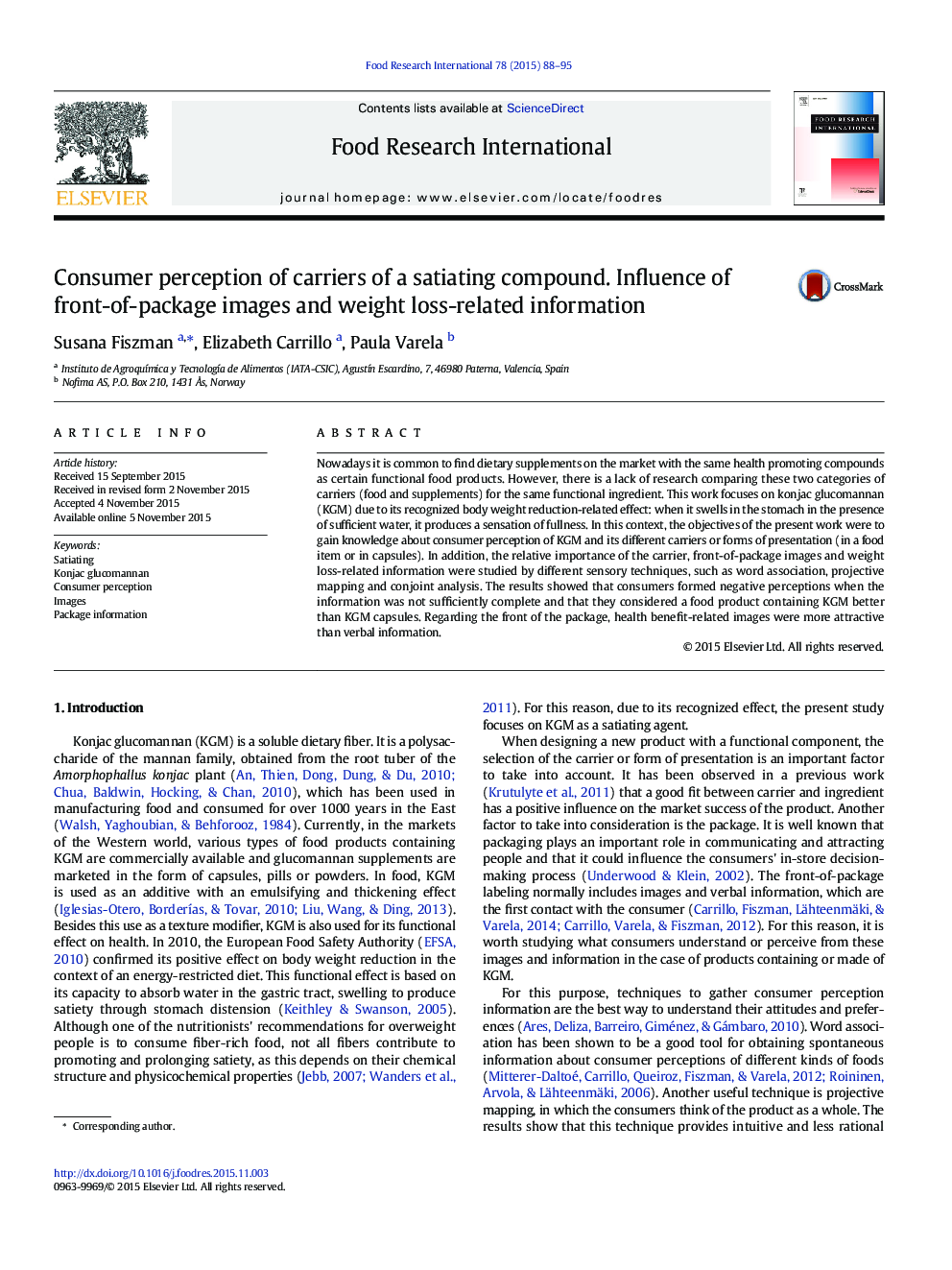| Article ID | Journal | Published Year | Pages | File Type |
|---|---|---|---|---|
| 4561297 | Food Research International | 2015 | 8 Pages |
•Negative perceptions of an unknown weight reduction-related compound were found.•When information was given to consumers a positive shift was detected.•Food items were considered better carriers for the compound than pill supplements.•Organic shapes and explicit images evoked direct associations with slimming concept.•“Appetite control” obtained higher trustworthy ratings than “Helps to lose weight”.
Nowadays it is common to find dietary supplements on the market with the same health promoting compounds as certain functional food products. However, there is a lack of research comparing these two categories of carriers (food and supplements) for the same functional ingredient. This work focuses on konjac glucomannan (KGM) due to its recognized body weight reduction-related effect: when it swells in the stomach in the presence of sufficient water, it produces a sensation of fullness. In this context, the objectives of the present work were to gain knowledge about consumer perception of KGM and its different carriers or forms of presentation (in a food item or in capsules). In addition, the relative importance of the carrier, front-of-package images and weight loss-related information were studied by different sensory techniques, such as word association, projective mapping and conjoint analysis. The results showed that consumers formed negative perceptions when the information was not sufficiently complete and that they considered a food product containing KGM better than KGM capsules. Regarding the front of the package, health benefit-related images were more attractive than verbal information.
